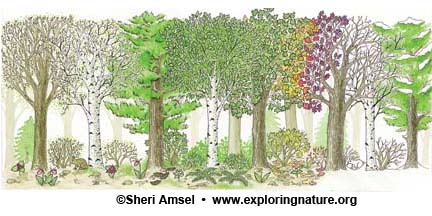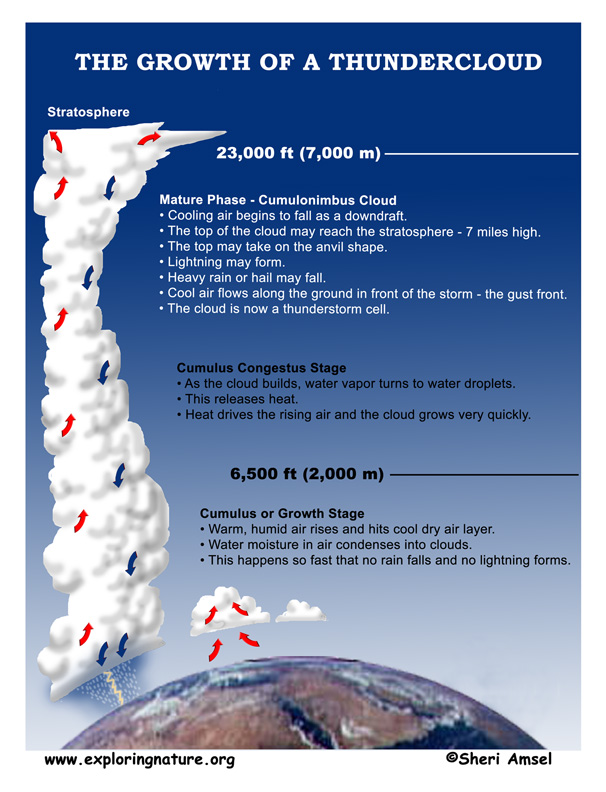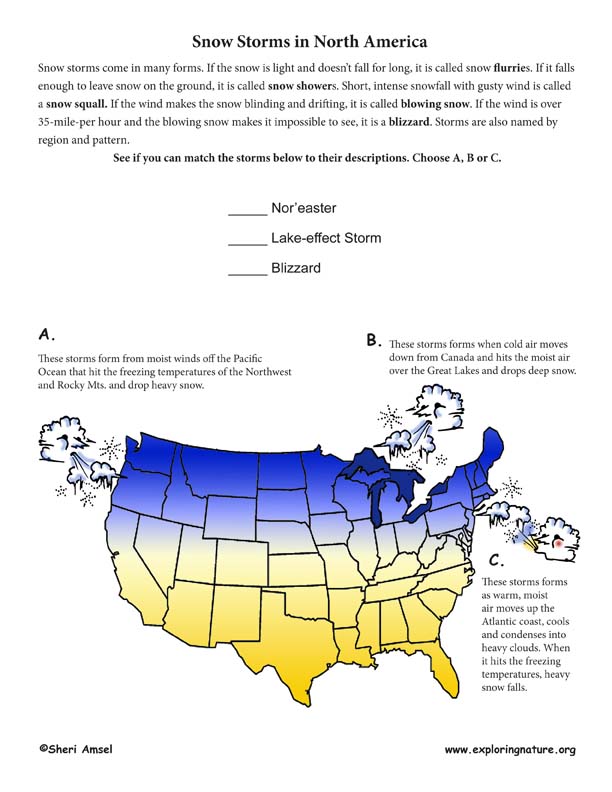

_________________________________________________________________________________________________________________________________________________________
Disciplinary Core Ideas
ESS2.D: Weather and Climate
• Scientists record patterns of the weather across different times and areas so that they can make predictions about what kind of weather might happen next. (3-ESS2-1)
• Climate describes a range of an area’s typical weather conditions and the extent to which those conditions vary over years. (3-ESS2-2)
Performance Expectations Students who demonstrate understanding can:
3-ESS2-1. Represent data in tables and graphical displays to describe typical weather conditions expected during a particular season. [Clarification Statement: Examples of data could include average temperature, precipitation, and wind direction.] [Assessment Boundary: Assessment of graphical displays is limited to pictographs and bar graphs. Assessment does not include climate change.]
_________________________________________________________________________________________________________________________________________________________
Use the Template and Resource Links to Fulfill NGSS
l. Goals:
Essential Questions:
ll. Introductory Activities to Assess Prior Knowledge
A. Simple Activities - that assess students’ understanding of weather patterns.B. Brainstorming Session
Question: What are some weather patterns vs. climates you know about?
1. Break students down into groups of 3-4.
2. Ask students to generate a list of the different weather patterns vs. climates they know of and briefly decribe them.
3. Discuss
A. Read about weather patterns and climate.
Global Warming and Climate Change
Examples of Models (depicts the concept expressed in the reading):
Ask students to look at the models of weather and nutrient cycle and explain how each illustrates the concept.
Inquiry related to Earth's weather and climate:
V. Summarize Knowledge - Enduring Understandings
Vl. Next Generation of Science Standards (NGSS) - Grade 3
Disciplinary Core Ideas
ESS2.D: Weather and Climate
• Scientists record patterns of the weather across different times and areas so that they can make predictions about what kind of weather might happen next. (3-ESS2-1)
• Climate describes a range of an area’s typical weather conditions and the extent to which those conditions vary over years. (3-ESS2-2)
Science and Engineering Practices (NGSS)
Analyzing and Interpreting Data
Analyzing data in 3–5 builds on K–2 experiences and progresses to introducing quantitative approaches to collecting data and conducting multiple trials of qualitative observations. When possible and feasible, digital tools should be used.
• Represent data in tables and various graphical displays (bar graphs and pictographs) to reveal patterns that indicate relationships. (3-ESS2-1)
Obtaining, Evaluating, and Communicating Information
Obtaining, evaluating, and communicating information in 3–5 builds on K–2 experiences and progresses to evaluating the merit and accuracy of ideas and methods.
• Obtain and combine information from books and other reliable media to explain phenomena. (3-ESS2-2)
Crosscutting Concepts
Patterns
• Patterns of change can be used to make predictions. (3-ESS2-1),(3-ESS2-2)
Performance Expectations
Students who demonstrate understanding can:
3-ESS2-1. Represent data in tables and graphical displays to describe typical weather conditions expected during a particular season. [Clarification Statement: Examples of data could include average temperature, precipitation, and wind direction.] [Assessment Boundary: Assessment of graphical displays is limited to pictographs and bar graphs. Assessment does not include climate change.]
3-ESS2-2. Obtain and combine information to describe climates in different regions of the world.
Common Core State Standards Connections
ELA/Literacy
RI.3.1 Ask and answer questions to demonstrate understanding of a text, referring explicitly to the text as the basis for the answers. (3-ESS2-2)
RI.3.9 Compare and contrast the most important points and key details presented in two texts on the same topic. (3-ESS2-2)
W.3.8 Recall information from experiences or gather information from print and digital sources; take brief notes on sources and sort evidence into provided categories. (3-ESS2-2)
Mathematics
MP.2 Reason abstractly and quantitatively. (3-ESS2-1),(3-ESS2-2)
MP.4 Model with mathematics. (3-ESS2-1),(3-ESS2-2)
MP.5 Use appropriate tools strategically. (3-ESS2-1)
3.MD.A.2 Measure and estimate liquid volumes and masses of objects using standard units of grams (g), kilograms (kg), and liters (l). Add, subtract, multiply, or divide to solve one-step word problems involving masses or volumes that are given in the same units, e.g., by using drawings (such as a beaker with a measurement scale) to represent the problem. (3-ESS2-1)
3.MD.B.3 Draw a scaled picture graph and a scaled bar graph to represent a data set with several categories. Solve one- and two-step “how many more” and “how many less” problems using information presented in bar graphs. (3-ESS2-1)
When you research information you must cite the reference. Citing for websites is different from citing from books, magazines and periodicals. The style of citing shown here is from the MLA Style Citations (Modern Language Association).
When citing a WEBSITE the general format is as follows.
Author Last Name, First Name(s). "Title: Subtitle of Part of Web Page, if appropriate." Title: Subtitle: Section of Page if appropriate. Sponsoring/Publishing Agency, If Given. Additional significant descriptive information. Date of Electronic Publication or other Date, such as Last Updated. Day Month Year of access < URL >.
Amsel, Sheri. "Grade 3 - 3-ESS2 Earth’s Systems" Exploring Nature Educational Resource ©2005-2024. December 13, 2024
< http://www.exploringnature.org/db/view/Grade-3-3-ESS2-Earthrsquos-Systems >



